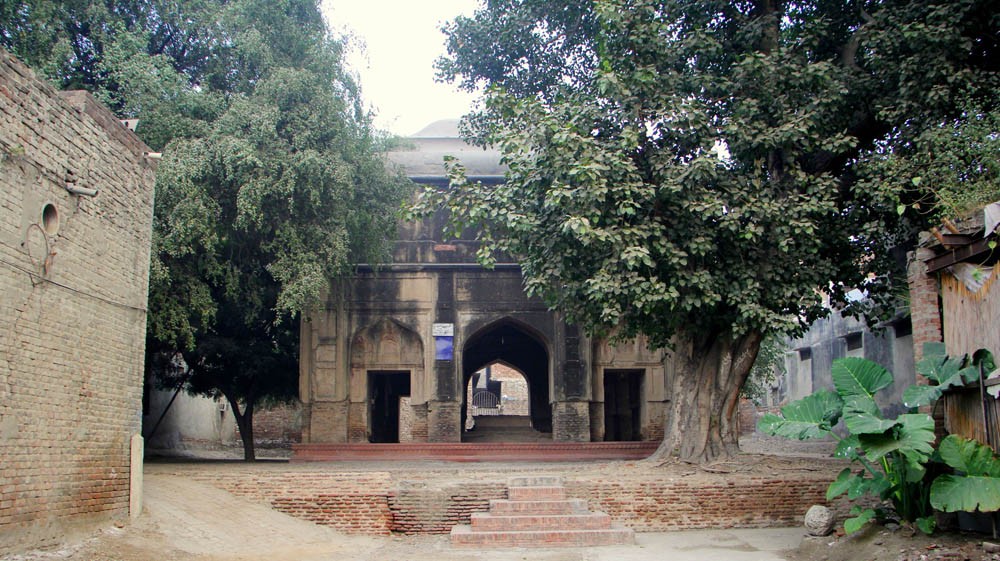

This is a strange piece of architecture I came across while driving on Multan Road, past Samanabad Mor, a densely populated area of Lahore.
A 17th-century Mughal relic, the tomb of Begum Zebun Nisa (which translates as ‘the most beautiful of all women’), the eldest and distinguished daughter of Emperor Aurangzeb (1637-1702), is scarily hidden behind a heap of shops. You are likely to pass it by and not notice it at all.
Originally, the tomb was constructed in the centre of a garden provided with majestic buildings and a summer house, about five kilometres south of the Walled City of Lahore. There are other pieces of the garden such as the two corner towers and a central gateway, all of which have now been covered by residential and commercial areas that have come up in the space of its garden.
The pyramidal dome of Zebun Nisa Tomb, curved externally, is a masterpiece in its own right.
The tomb stands on an elevated brick platform and is square in plan. The chamber is circled with a double dome, pyramidal from the outside and semi-circular inside.
Each facade of the square tomb is perforated with a cusped arch in the centre, bordered by cusped arch and low-height doorways through which the internal chamber which carries the grave is apparent.
As per historic accounts, the structure of Zebun Nisa Tomb was once among the most beautiful Mughal edifices of Lahore. It was decorated with costly stones, and furnished with pavilions, fountains and reservoirs. Historians also believe that Maharaja Ranjit Singh removed the costly materials to construct his summer house in the Huzoori Bagh.
Leaving behind Ranjeet Singh’s ravages, the present condition of the tomb is no less distressing. The Archaeology Department of Punjab is to blame for it.
Enclosed with an iron grill, it is one of the most neglected pieces of the Mughal era. You find debris all around, drug addicts and stray dogs lounging about.
There is some controversy as to who is buried in the tomb, commonly ascribed to Zebun Nisa. Several historians suggest it may actually belong to Mian Bai (also known as Fakhrun Nisa) who was gifted the Chauburji garden by Jahan Ara, the daughter of Emperor Shah Jehan. However, the plaque on the tomb states the name Zebun Nisa.
The facade displays panels of tile mosaic, with which the internal surfaces were once decorated. The noteworthy feature are the domed pavilions, supported on brick-built square pillars, four on each side. The domes of these pavilions are covered with green tiles. The stage on each side of the passage has terracotta screens in complex patterns. The interior is richly embellished with fresco paintings in floral designs.
The monument holds some special features which are still intact. If these are conserved or maintained by the concerned department, the place can become a tourist favourite. It is an unattended site, left to the mercy of the wandering animals. Even if it is unidentified, one should respect it as a 17th century Mughal monument. I wonder how many more monuments are lying unattended.